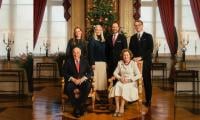AgAFP
MANAMA: Mumbai´s Art Deco buildings — believed to be the world´s second largest collection after Miami — were added on Saturday to UNESCO´s World Heritage List alongside the city´s better-known Victorian Gothic architecture.
The decision was approved at a UNESCO meeting in the Bahraini capital Manama. A not-for-profit team of enthusiasts are in the process of documenting every single one of Mumbai´s Art Deco treasures but they estimate there may be more than 200 across India´s bustling financial capital. The majority of them, built on reclaimed land between the early 1930s and early 1950s, are clustered together in the south of the coastal city where they stand in stark contrast to Victorian Gothic structures. “The Victorian ensemble includes Indian elements suited to the climate, including balconies and verandas,” UNESCO said in a press statement announcing the decision. “The Art Deco edifices... blend Indian design with Art Deco imagery, creating a unique style that has been described as Indo-Deco,” it added.
eight pre-Islamic Iranian sites to heritage list: Unesco on Saturday added eight pre-Islamic Iranian archeological sites to its World Heritage List, the UN agency announced at a meeting in the Bahraini capital.
The sites collectively appear on the worldwide list as the “Sassanid Archaeological Landscape of Fars region (Islamic Republic of Iran)”. A province in modern-day Iran´s south, Fars was the cradle of the Sassanid dynasty, which appeared at the start of the third century. After the fall of the Parthian empire, the Sassanids ruled territory that, at its peak, stretched from the west of Afghanistan to Egypt, before falling to the Arab conquest under the Umayyad caliphate in the middle of the seventh century.
Korean mountain Buddhist temples: Seven ancient Korean mountain temples, which typify the way Buddhism in the country has merged with indigenous beliefs and styles, were listed as UNESCO World Heritage sites. The seven mountain temples — Seonamsa, Daeheungsa, Beopjusa, Magoksa, Tongdosa, Bongjeongsa, Buseoksa — were all established during the Three Kingdoms period that lasted until the 7th century AD. UNESCO made the announcement at a meeting in the Bahraini capital Manama. “These mountain monasteries are sacred places, which have survived as living centres of faith and daily religious practice to the present,” UNESCO said in a press statement.
Japan Christian sites: A dozen Christian locations in parts of southern Japan where members of the faith were once brutally persecuted were selected for inclusion on the UNESCO World Heritage list on Saturday.
The 12 sites include 10 villages, Hara Castle and Oura Cathedral, a Catholic church in Nagasaki that is dedicated to 26 Christians who were executed for their beliefs over four centuries ago. The decision was announced in the Bahraini capital Manama. In a press statement UNESCO said that the 12 sites “bear unique testimony to a cultural tradition nurtured by hidden Christians in the Nagasaki region who secretly transmitted their faith”. Christianity in Japan dates back to 1549, when European Jesuit missionary Francis Xavier arrived in the country with two companions and the religion began spreading in western Japan.















